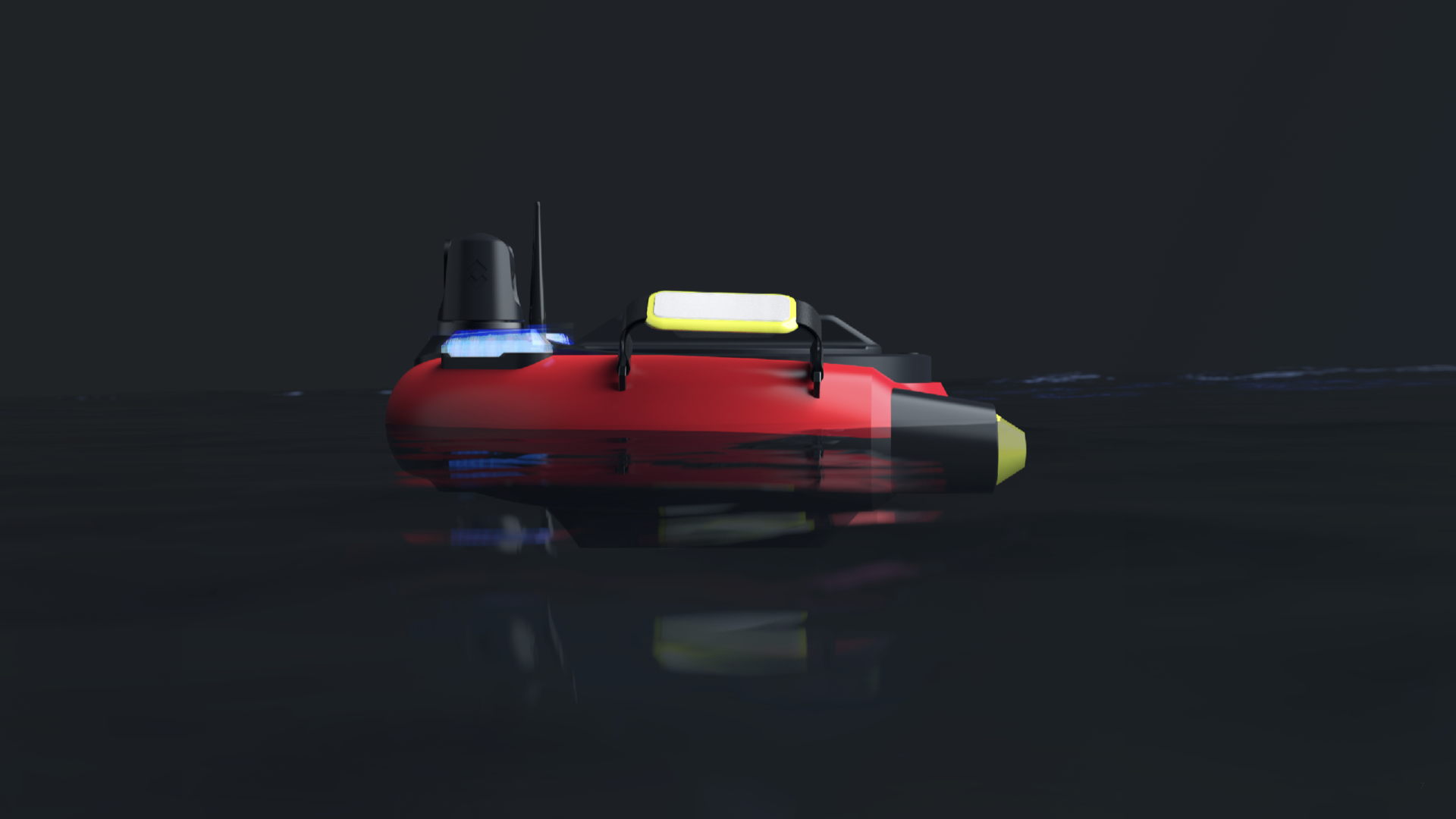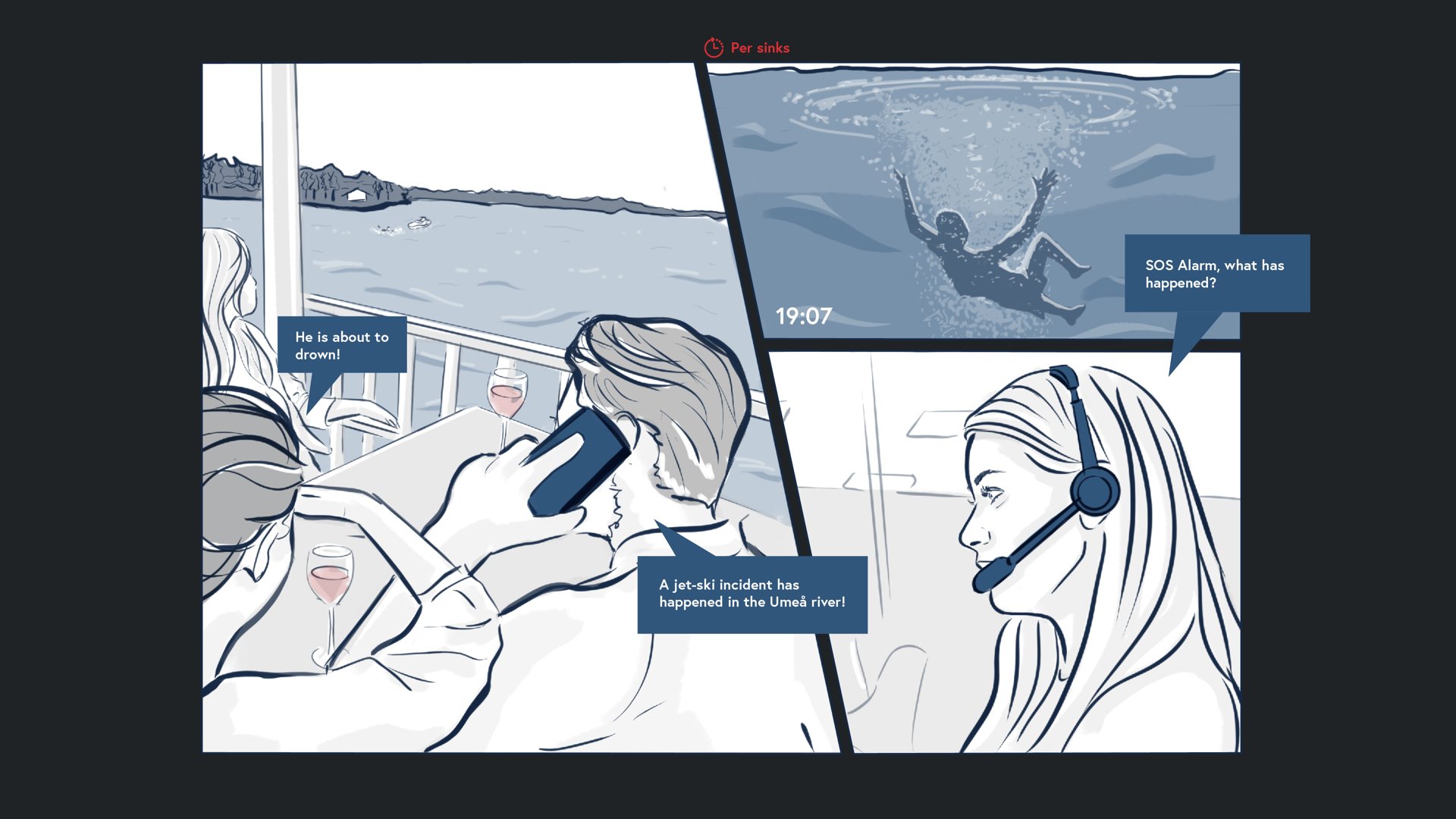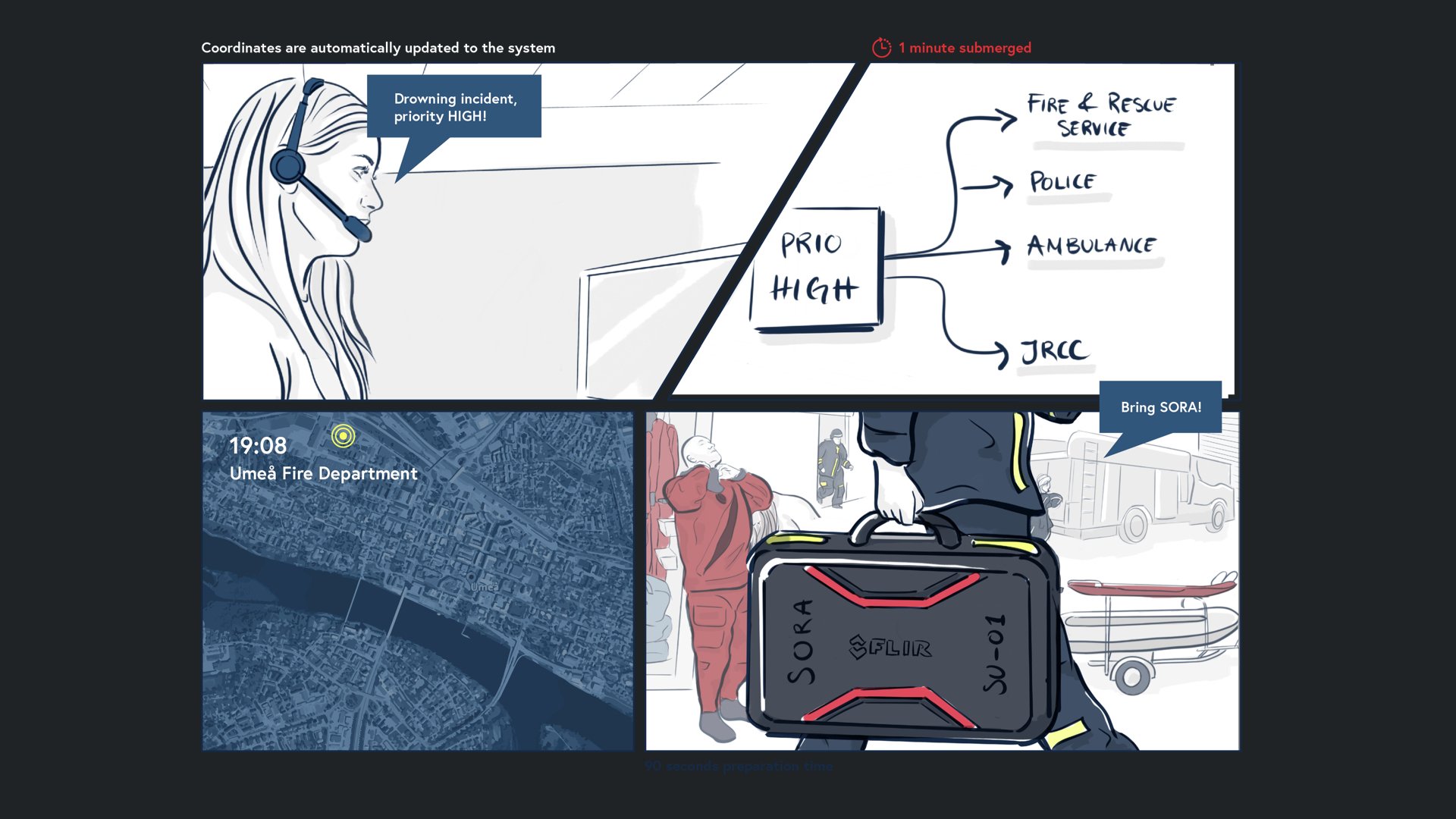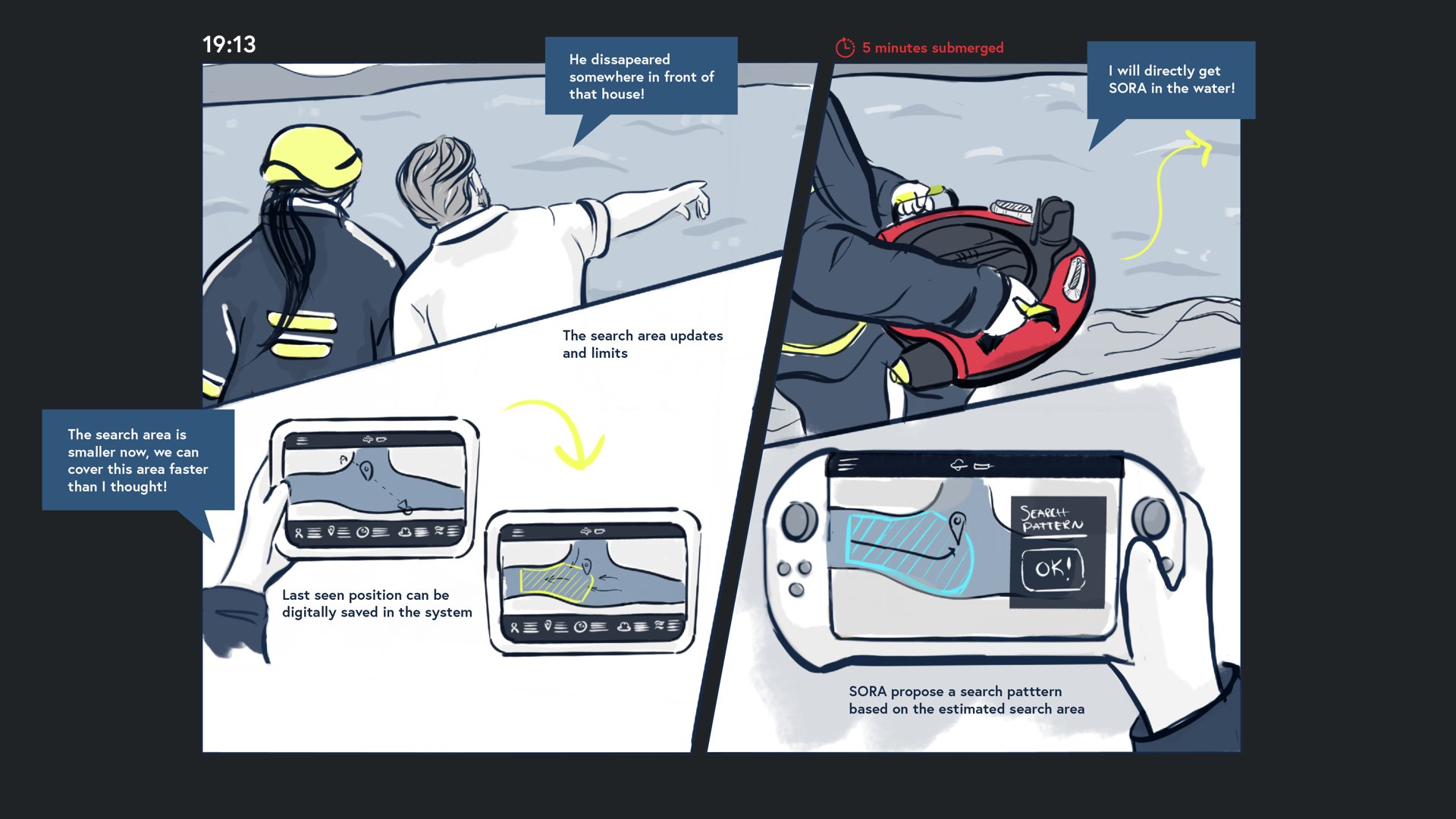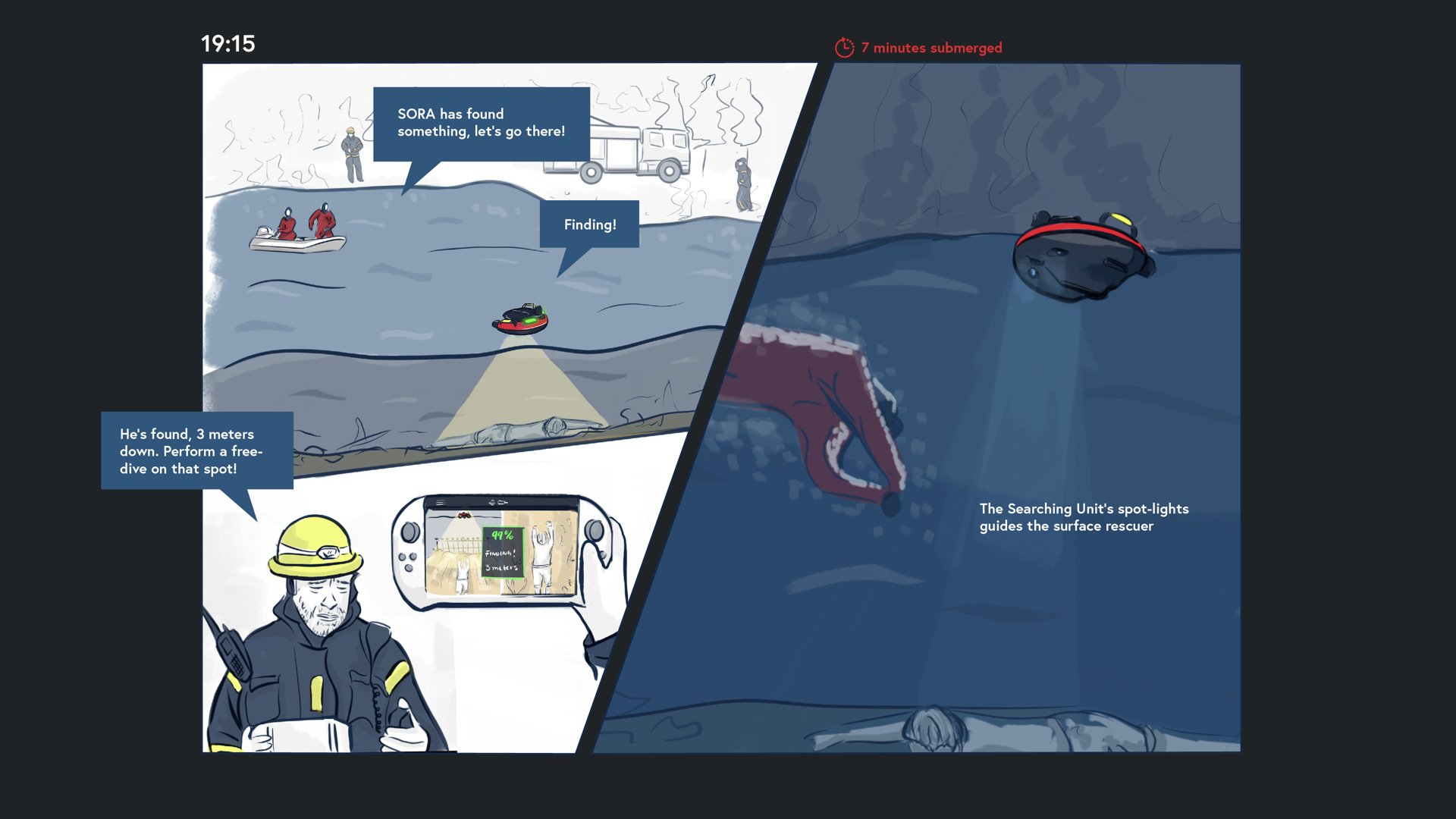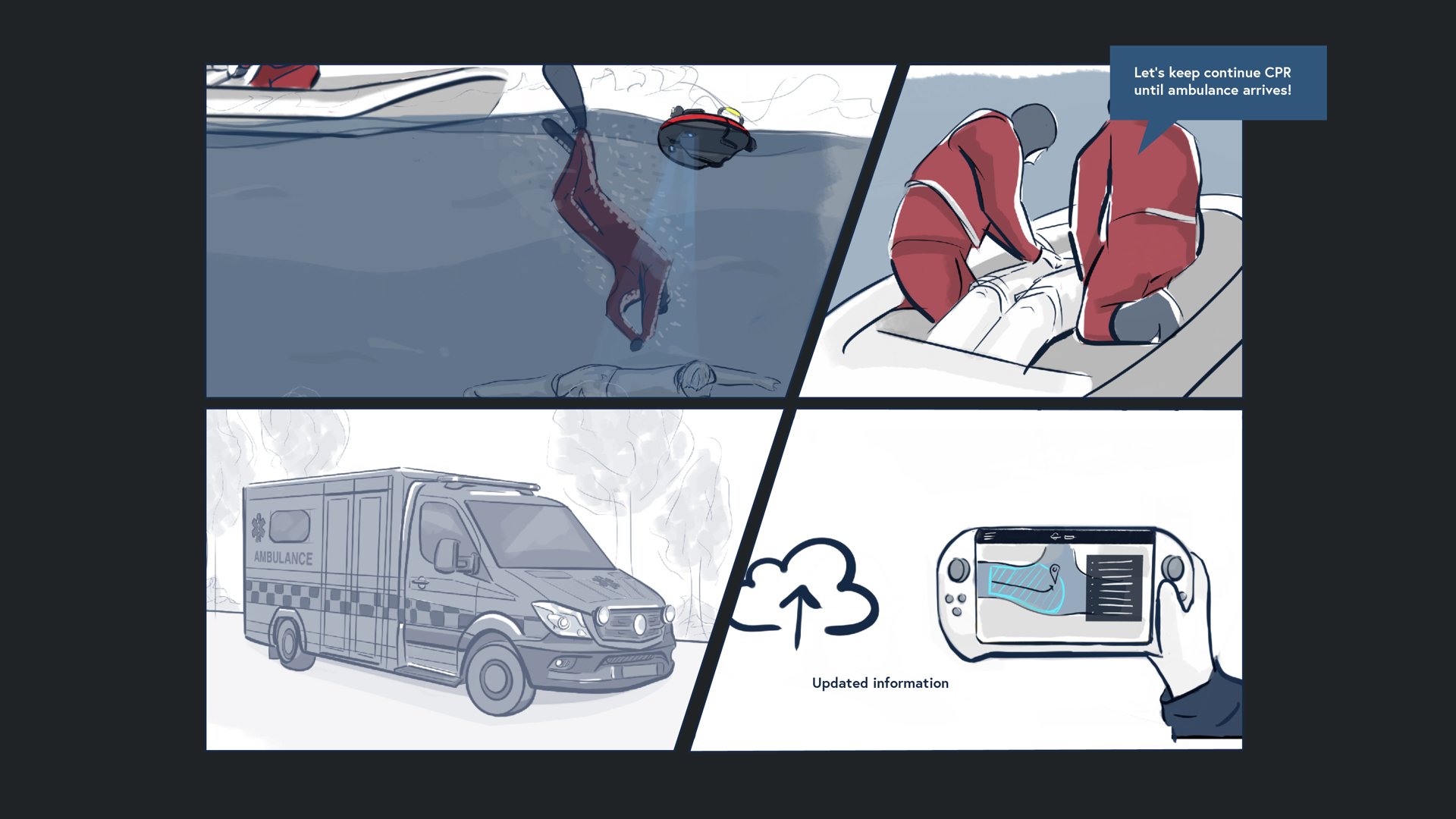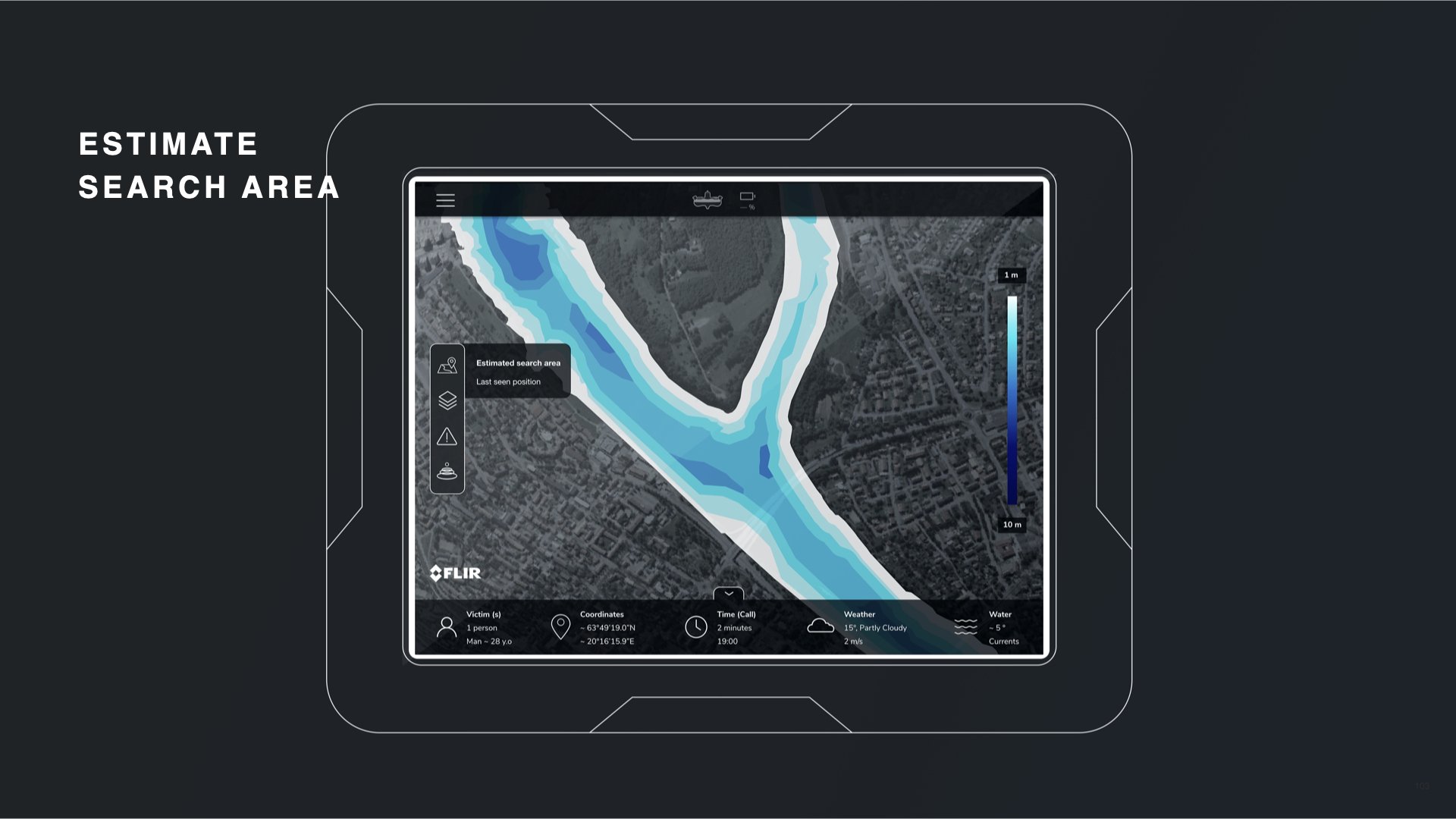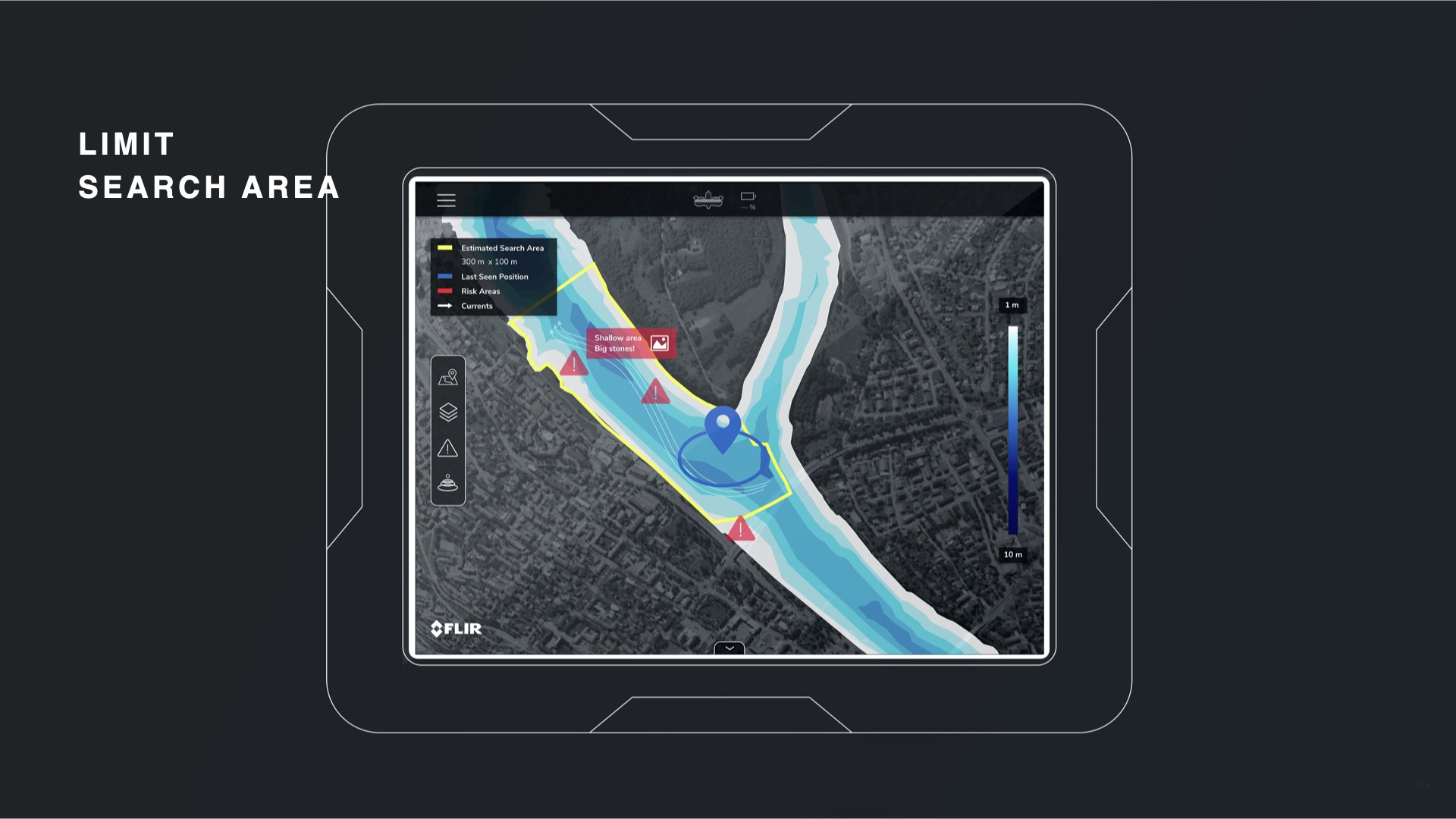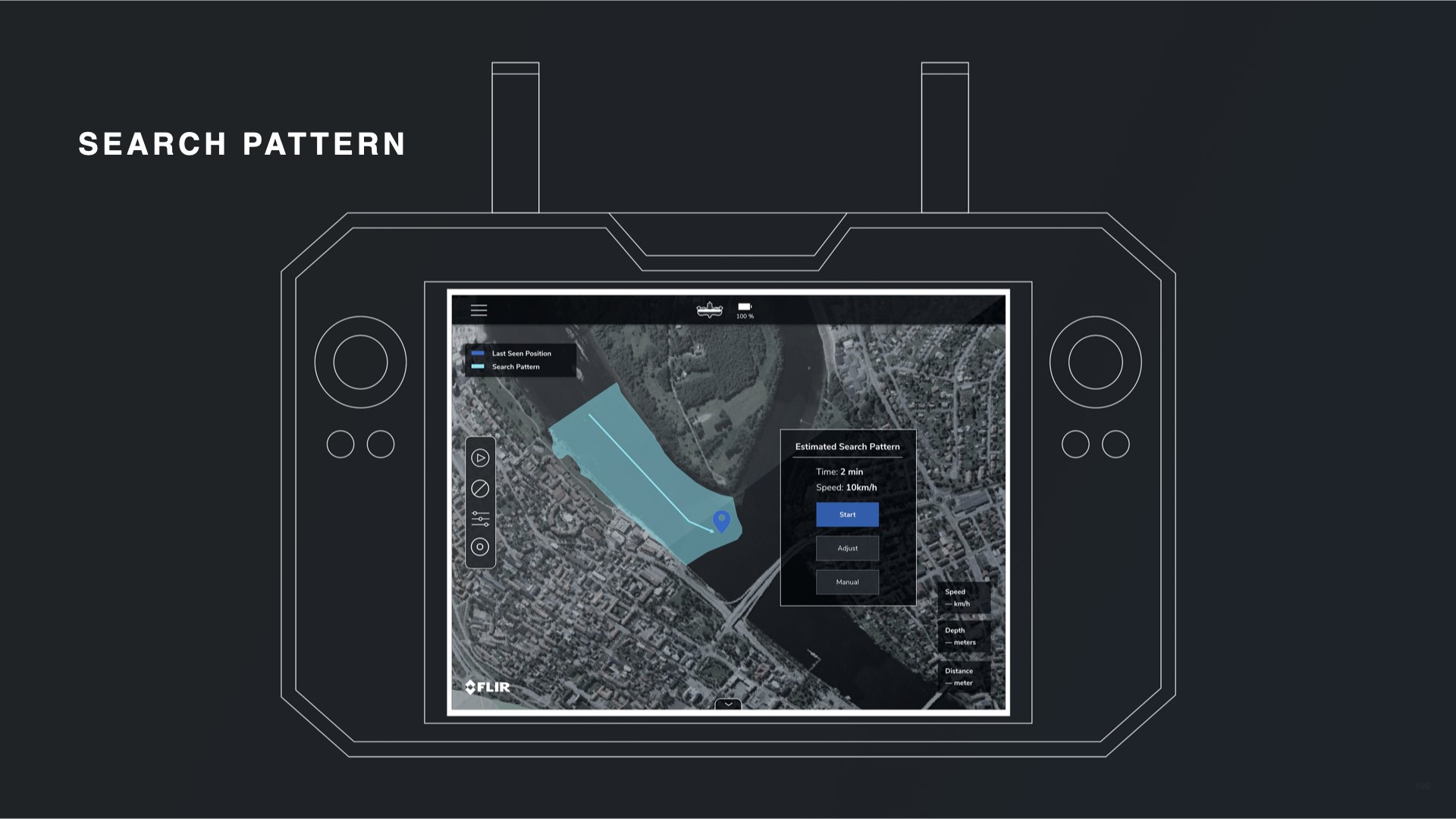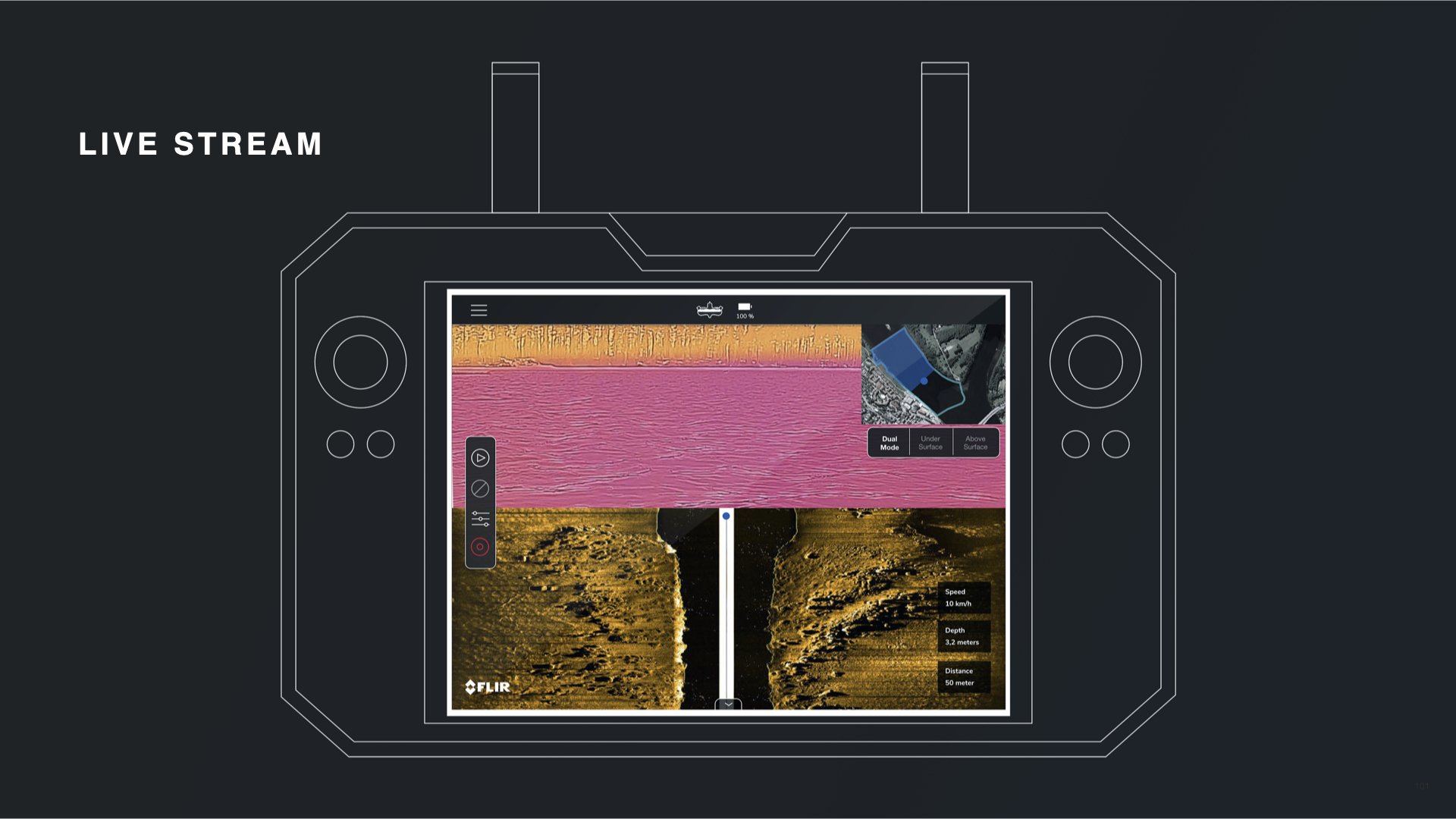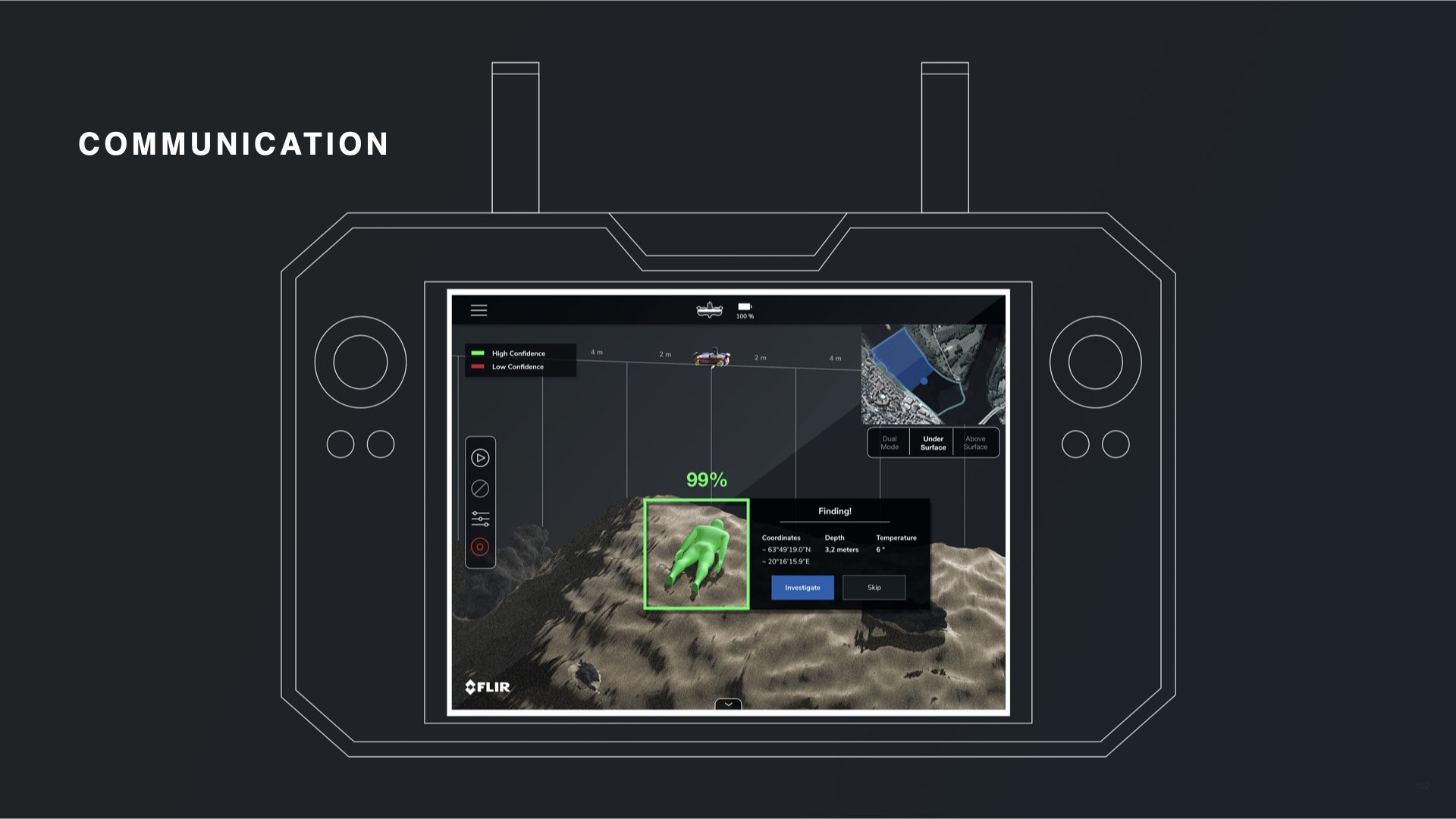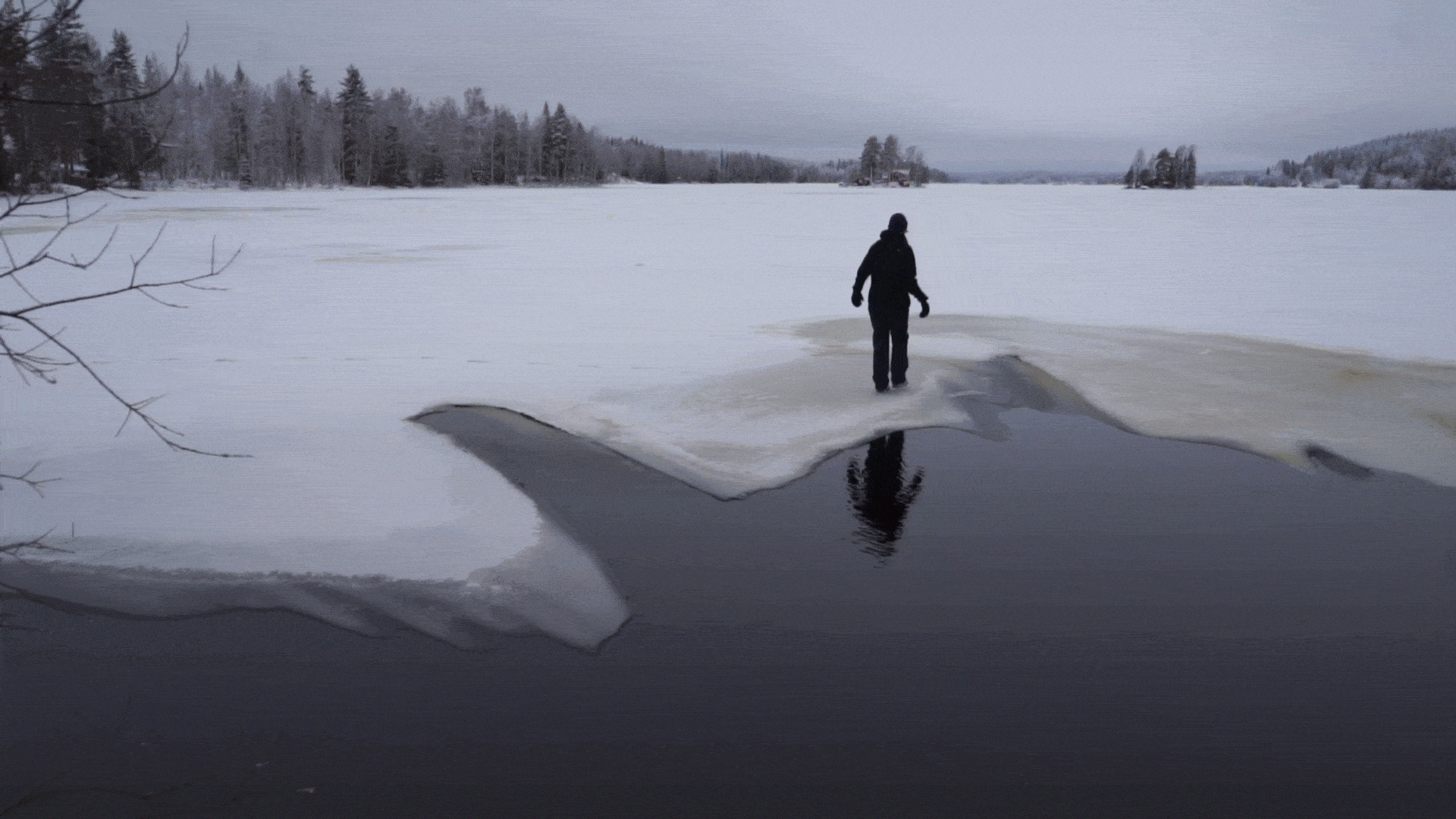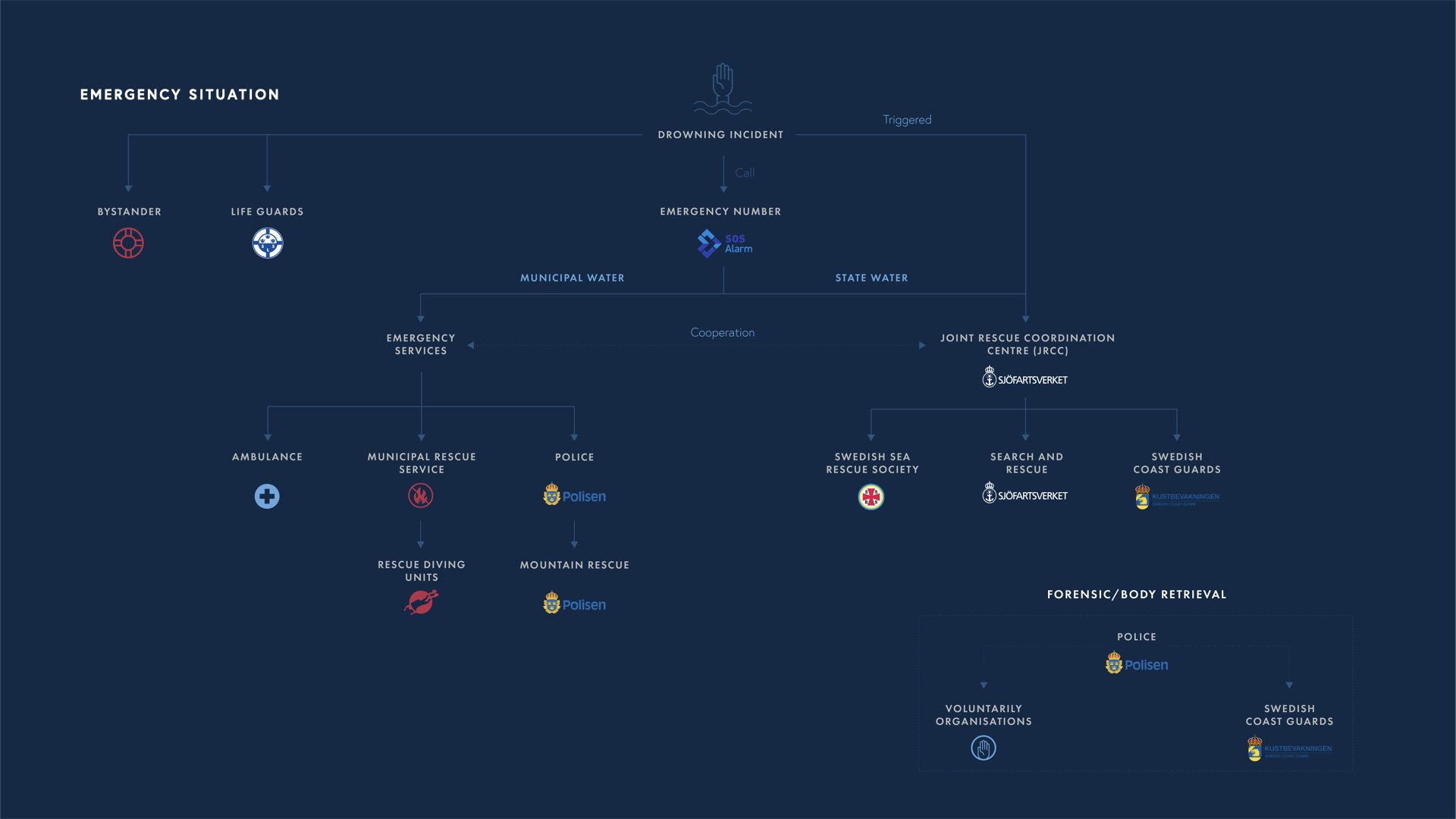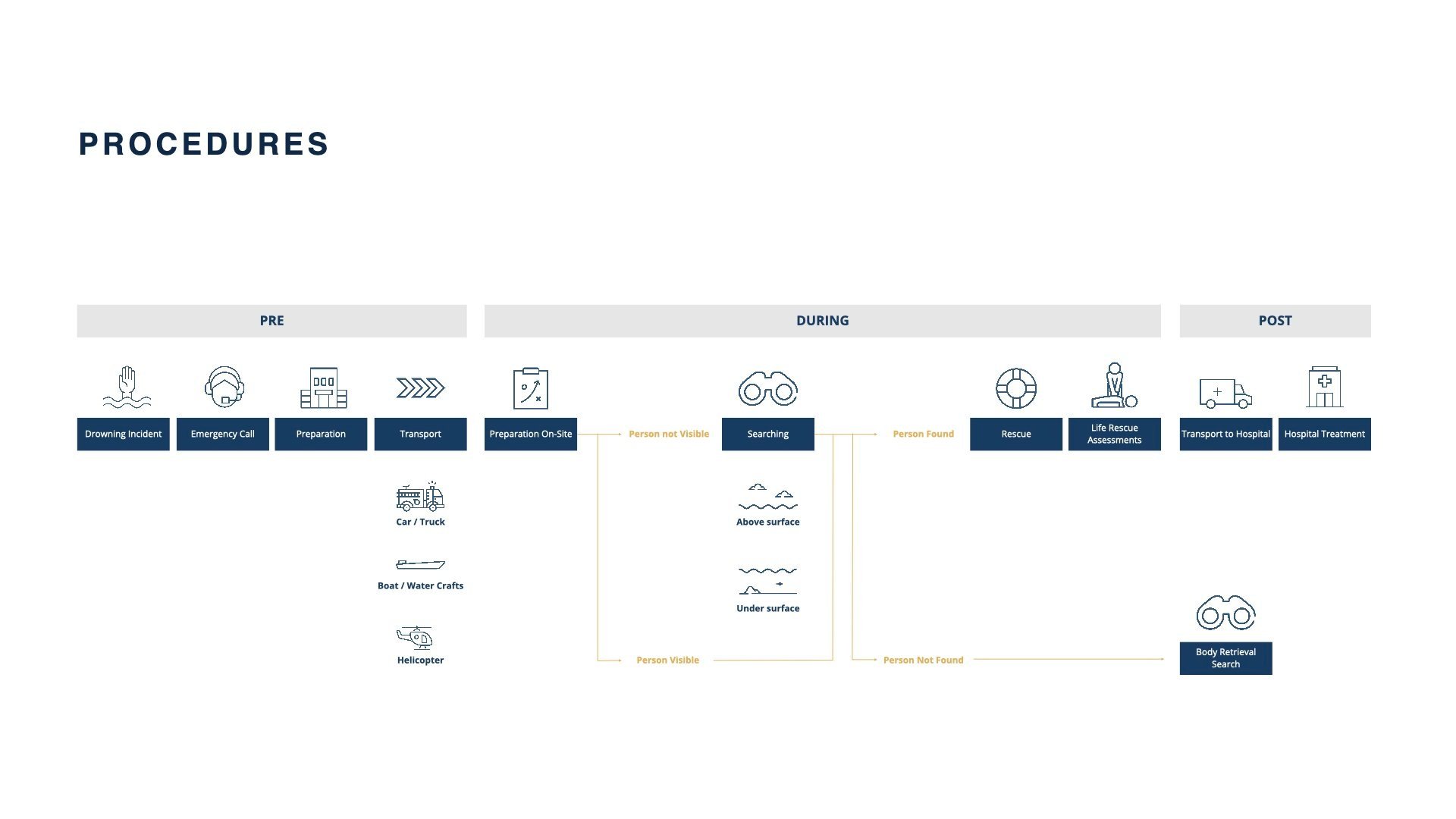Search & Rescue Operations during Drowning Incidents
20 weeks Degree Project, Spring 2021, MFA Umeå Institute of Design
Individual Project
—
In collaboration with
Stakeholders & experts in the field
Challenge
Drowning ranks third among accidental deaths globally, with approximately 320,000 fatalities yearly. In Sweden, around 400 people experiences a drowning annually. Time is the biggest limitation, where survival rates decline rapidly after just 10 minutes of submersion. Consequently, search and rescue efforts become stressful, complex, time-consuming and challenging due to large search areas and poor visibility for rescue teams.
Approach
The project aimed to improve search and rescue operations during drowning incidents, in order to save more lives. Focusing on procedures in Sweden, in collaboration with FLIR Systems as well as stakeholders and experts in the field. The holistic research involved interviews, field trips, and literature review. Key challenges identified were in scenarios when a person is missing and a search process must start. The project narrowed its focus to municipality rescue services as the primary stakeholders, recognising their swift response but limited searching tools. Conclusions highlighted the need for more efficient search solutions to enhance life-saving efforts during the first critical minutes to save more lives.
Several concepts were developed, tested and iterated together with stakeholders, targeting the main problem statement:
“How might we improve the searching process for the municipality rescue services during a drowning incident?”
Publications
SORA
SORA is a concept solution consisting of a ‘Search Estimation and Planning System’ connected to the search unit SORA. Functions as an additional set of eyes for rescuers both above and below water, employing thermal and sonar technology alongside AI to identify drowning victims from the surroundings. SORA serves as a decision support for rescue professionals during the entire search operation
Searches above and underwater simultaneously, scanning large areas thorough and fast
AI to estimate and limit the search area, and to identify drowning victims
User-centric approach
Getting the holistic perspective
20+ interviews were collected with stakeholders distributed over the majority of rescue professional and organisations in Sweden, including:
Water Life Guards
Fire Fighters
Divers
Voluntary Rescuers
Air Search and Rescuers
Expert Contact: Registered Nurse, Paramedic and Associate Professor
Field trips to gain insights in challenges, needs and equipment being used
Focused analysis: The Searching Process
“Only a few people are found in time after a drowning incident, but if we could find more people in an earlier state, more CPR would be performed, and more people would probably survive”
- Quote: Registered Nurse, Paramedic and Associate Professor
Challenging procedure were time is the biggest limitation
“The majority of victims die, or suffer severe brain damage already after 10 minutes of submersion in water”
- Literature research
“Water is for me combined with adrenalin - it needs to go fast!”
- Quote: Firefighter specialized in water rescue
Poor visibility
“Sometimes you only see 20cm, or 3 meters, sometimes nothing. If you are going to search an area big as a football field it takes a very long time ”
- Quote: Rescue diver
Heavy work & risks
“Sometimes we are not able to dive due to the risks”
- Quote: Firefighter, specialized in water rescue and rescue diving
Large search areas
“It’s difficult to point out the exact position the person disappeared, you don’t have any reference points in open water”
- Quote: Firefighter, specialized in water rescue
Distance & Resources
There’s a lack of emergency rescue divers in Sweden, and other diving resources often come in to late due to large distances
- Literature research and interview insights
Focused primary stakeholder: The Firefighters
“The first thing you become as a firefighter, is that you become both a smoke diver, and a surface rescuer (firefighters trained to perform water rescue)”
- Quote: Firefighter, specialized in water rescue and rescue diving
Surface rescuers are well distributed over the entire country of Sweden, who has a very fast response time: On-the-go within 90 seconds from the call
- Literature research and interview insights
Understanding the scenario in detail
Live-sketching common drowning scenarios with firefighters for detailed understanding of the challenges and procedures
Co-creation of concepts together with stakeholders
Brainstorm session together with FLIR
Collaborative ideation sessions covering a holistic perspective of identified opportunities
Evaluating concept directions
Concept directions tested with FLIR, firefighters and the expert contact
Testing usability aspects and water stability
Evaluating different form and function directions to assess “throw-ability”, stability, handling and size
Exploring searching technologies
Simulating a real scenario of searching for a drowning victim
Sonar technology showed promising results in detecting underwater objects during a test with a submerged CPR-manakin on the bottom of a lake
Design development of a “character”
A character began to emerge, which I aimed to develop further, ensuring the device would serve as an assistant to rescuers rather than just a tech gadget. It also needed to align with FLIR's design DNA and suit the context and needs of its primary stakeholder.
Source: FLIR website and Google images as inspiration
